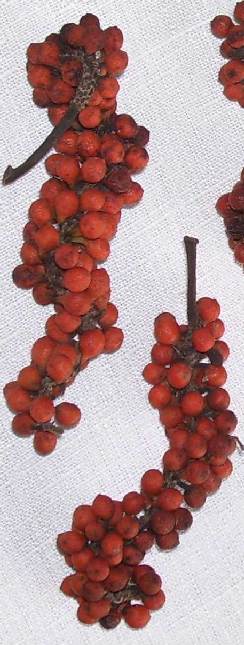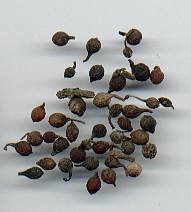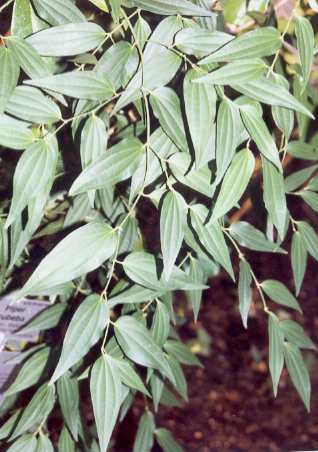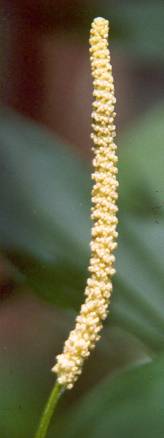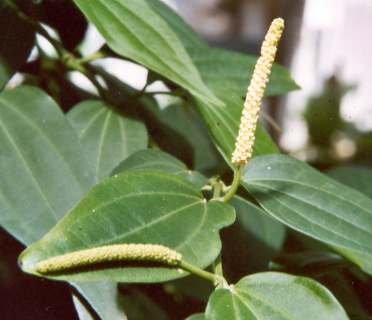
|
| Cubeb pepper with flowers (botanical identity uncertain) |
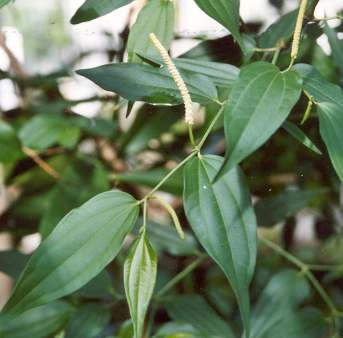
|
| Flowering cubeb pepper (botanical identity uncertain) |
In Morocco, spice mixtures tend to be rather complex, or, as some say, they
go baroque with respect to the number of their ingredients.
Ras el hanout [رأس الحانوت] (ras al-hanut)
is the name of a spice mixture with varying number of components
that can also contain aphrodisiacs, e. g., the famous Spanish flies
(Lytta vesicatoria,
a highly toxic beetle — caveat emptor!) or cannabis. Less dangerous components might be
cubeb pepper, long pepper,
black pepper,
grains of paradise,
chiles,
chaste tree berries,
nutmeg,
cinnamon,
cloves,
cardamom and even
rose flowers.
Obviously, there are only a few common spices left out! The name
ras el hanout literally means head of the shop
and
implies that only one person in the store is considered able to compose the
mixture according to the need (and the financial potency) of the customer. As
may be guessed, the character of this mixture is not fixed but varies widely,
and general remarks about its culinary merits are difficult.
Cubeb pepper is sometimes hard to get, since it is not much in demand in our
days. As a further complication, I have seen cubeb pepper several times being
confused with the so-called cinnamon buds
or cassia buds
, dried
unripe fruits of the cinnamon or
cassia trees, respectively. Moreover, some sources
seem to confuse cubeb pepper with allspice,
which looks somewhat similar. In its flavour, cubeb pepper differs much
from these other spices.
